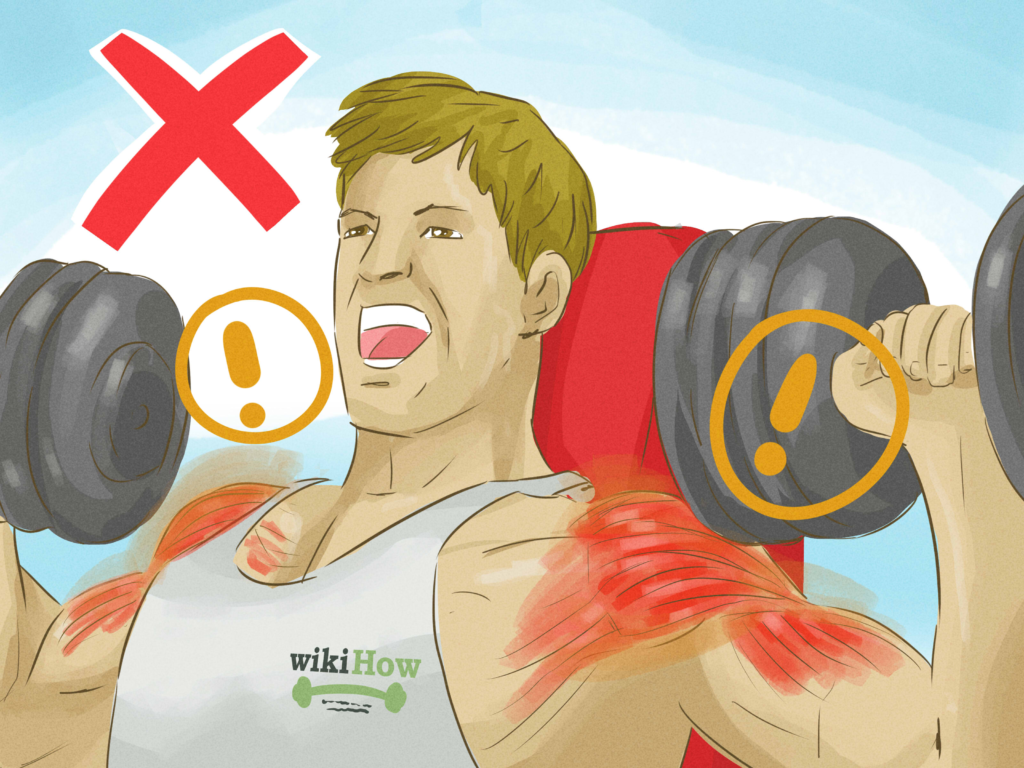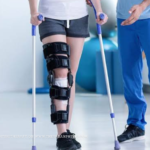Every overhead reach sends a signal — and it’s not a good one.
That dull ache when you lift your arm to grab something from a high shelf. The sharp twinge when you throw a ball. The nagging discomfort that wakes you up at night when you roll onto your shoulder. These aren’t just signs of overuse or “getting older” — they’re your body’s warning system telling you something is wrong with your rotator cuff.
Here’s the uncomfortable truth: a minor rotator cuff strain today becomes a complete tear tomorrow that needs surgical repair. What starts as manageable shoulder pain can progress into a debilitating injury that requires months of recovery and invasive intervention. But it doesn’t have to end that way.
What Is a Rotator Cuff Injury and Why Should You Care?
Your rotator cuff is a group of four muscles and their tendons that wrap around your shoulder joint like a supportive sleeve. These muscles — the supraspinatus, infraspinatus, teres minor, and subscapularis — work together to stabilize your shoulder and allow you to lift, rotate, and move your arm in virtually any direction.
When these muscles or tendons become damaged, inflamed, or torn, even simple daily activities become painful challenges. Reaching into the backseat of your car, putting on a jacket, or sleeping comfortably becomes difficult or impossible.
Rotator cuff injuries exist on a spectrum:

- Tendinitis: Inflammation of the rotator cuff tendons from overuse
- Impingement: The rotator cuff tendons get pinched between shoulder bones during movement
- Partial tear: Some tendon fibers are damaged but the tendon remains partially intact
- Complete tear: The tendon is completely severed from the bone
The critical point? These conditions are progressive. Ignoring early symptoms allows minor inflammation to develop into partial tears, and partial tears to become complete ruptures that may require surgery.
How Rotator Cuff Injuries Develop: The Three Main Culprits
1. Repetitive Overhead Activities
Your shoulder wasn’t designed for constant overhead motion. Yet many people subject their rotator cuffs to exactly that — day after day, week after week.
Painters reaching upward with loaded brushes. Tennis players serving hundreds of balls. Swimmers rotating their arms through countless strokes. Construction workers operating tools above head height. Even office workers repeatedly reaching for items on high shelves are at risk.
Each overhead movement creates friction and stress on the rotator cuff tendons as they pass through the narrow space beneath your shoulder blade (the acromion). Over time, this repetitive friction causes microtrauma — tiny injuries that accumulate faster than your body can repair them. The result? Chronic inflammation that weakens the tendons and sets the stage for tearing.
2. Poor Lifting Technique
Improper lifting mechanics place enormous strain on your rotator cuff, especially when:

- You lift heavy objects away from your body instead of keeping them close
- You twist while lifting, creating rotational forces your shoulder struggles to control
- You use momentum instead of controlled muscle engagement
- You lift with your arms instead of your legs and core
- You perform sudden, jerky movements instead of smooth, deliberate ones
Many people develop rotator cuff injuries not from a single traumatic event, but from years of suboptimal lifting patterns at the gym, at work, or during household chores. Your shoulder compensates until it can’t anymore — and then the injury announces itself, often during what seems like a routine movement.
3. Age-Related Degeneration
Time is not kind to rotator cuff tendons. As we age, several degenerative changes occur:
Reduced blood supply: Tendons naturally have limited blood flow compared to muscles. As we get older, this blood supply diminishes further, slowing the healing process and making tendons more vulnerable to injury.
Collagen breakdown: The structural proteins that give tendons their strength begin to deteriorate after age 40. Tendons lose elasticity, become stiffer, and develop weak spots where tears are more likely to occur.
Bone spur formation: Over decades, bone spurs can develop on the underside of the acromion, reducing the space available for rotator cuff tendons and increasing impingement during movement.
Research shows that rotator cuff tears are found in approximately 25% of people in their 60s and over 50% of people in their 80s — even in those without symptoms. This means many people are walking around with damaged rotator cuffs that haven’t yet become symptomatic. The question isn’t if degeneration will occur, but when it will cause problems.
Recognizing the Warning Signs Before It’s Too Late
Early detection is your best defense against surgery. Watch for these red flags:
Pain patterns that shouldn’t be ignored:
- Dull, aching pain deep in your shoulder, especially after overhead activities
- Sharp pain with specific movements like reaching behind your back or overhead
- Pain that radiates down the outside of your upper arm
- Nighttime pain that disrupts sleep, particularly when lying on the affected shoulder
- Pain that persists for more than a few weeks despite rest
Functional limitations:
- Difficulty reaching behind your back (like tucking in a shirt or fastening a bra)
- Weakness when lifting objects, even light ones
- Decreased range of motion, particularly with overhead reaching
- A catching or clicking sensation during shoulder movement
- Inability to lift your arm without using your other arm to help
The progression you need to stop: Many people make the mistake of “pushing through” shoulder pain, believing it will resolve on its own. But rotator cuff injuries typically follow a predictable progression: pain with activity → pain at rest → weakness → loss of function → complete tear. The earlier you intervene, the simpler the solution.
How Physiotherapy Strengthens and Heals Your Rotator Cuff
Here’s the good news: most rotator cuff injuries — even partial tears — can be successfully treated without surgery through targeted physiotherapy. Studies show that up to 80% of people with rotator cuff problems improve significantly with conservative treatment.
The Physiotherapy Approach: A Three-Phase Strategy
Phase 1: Pain Reduction and Inflammation Control (Weeks 1-2)
The initial focus is managing pain and reducing inflammation so healing can begin. Your physiotherapist may use:

- Ice therapy to decrease inflammation and numb pain
- Gentle range-of-motion exercises to prevent stiffness
- Manual therapy techniques to improve joint mobility
- Activity modification guidance to avoid aggravating movements
- Posture correction to reduce shoulder stress
- Modalities like ultrasound or electrical stimulation when appropriate
This phase is not about “resting until it feels better.” Complete rest can lead to frozen shoulder and muscle atrophy. Instead, the goal is controlled, pain-free movement that promotes healing without causing further damage.
Phase 2: Strength and Stability Building (Weeks 3-8)
Once inflammation subsides and pain-free range of motion improves, the focus shifts to rebuilding strength in the rotator cuff muscles and surrounding shoulder stabilizers:
- Progressive resistance exercises using resistance bands, light weights, and body weight
- Scapular stabilization exercises to strengthen the muscles that control your shoulder blade
- Rotator cuff strengthening through internal and external rotation exercises
- Proprioception training to improve shoulder position awareness and control
- Gradual loading to rebuild tendon capacity
This phase is critical. Simply reducing pain isn’t enough — you must restore strength and endurance to the damaged tissues. Otherwise, you’ll return to your previous activities and re-injure the shoulder, creating a cycle of recurring problems.
Phase 3: Functional Restoration and Injury Prevention (Weeks 8-12+)
The final phase prepares you to return to your specific activities — whether that’s sports, work, or daily life — without risk of re-injury:
- Sport-specific or work-specific movement training
- Advanced strengthening exercises that simulate real-world demands
- Technique correction for lifting, throwing, or overhead activities
- Long-term exercise programming for continued shoulder health
- Education on ergonomics and injury prevention strategies
Why Physiotherapy Works: The Science
Physiotherapy addresses rotator cuff injuries through multiple mechanisms:
Tendon adaptation: Progressive loading stimulates tendon cells to produce new collagen, strengthening the tissue structure and increasing its capacity to handle stress.
Improved biomechanics: Correcting movement patterns reduces abnormal stress on the rotator cuff and distributes forces more evenly across the shoulder complex.
Muscle balance restoration: Strengthening weak muscles and releasing tight ones optimizes shoulder mechanics and reduces impingement.
Neuromuscular control: Training improves the timing and coordination of muscle activation, enhancing shoulder stability during dynamic movements.
Increased blood flow: Exercise promotes circulation to the tendons, delivering oxygen and nutrients essential for healing.
Research consistently demonstrates that physiotherapy produces outcomes comparable to surgery for many rotator cuff injuries, but with significantly lower risks, costs, and recovery times.
When Surgery Becomes Necessary (And How to Avoid It)
While physiotherapy is highly effective, some rotator cuff injuries do require surgical intervention:
- Complete, full-thickness tears that don’t respond to conservative treatment
- Large tears (greater than 3 cm) in younger, active individuals
- Tears accompanied by significant weakness that persists despite rehabilitation
- Acute traumatic tears in people who want to maintain high-level shoulder function
However, even when surgery is necessary, pre-surgical physiotherapy (called “prehabilitation”) significantly improves post-operative outcomes. Stronger muscles, better range of motion, and optimized movement patterns before surgery lead to faster, more complete recovery afterward.
The key insight: early physiotherapy intervention can prevent the progression from a treatable strain to a tear requiring surgery. Every week you delay addressing shoulder pain increases the likelihood of permanent damage.
Taking Action: Your Rotator Cuff Recovery Roadmap
If you’re experiencing shoulder pain, here’s your action plan:
Immediate steps (within 1-2 days):
- Modify or avoid activities that cause sharp pain
- Apply ice for 15-20 minutes every 2-3 hours if inflammation is present
- Maintain gentle, pain-free movement to prevent stiffness
- Avoid complete immobilization unless advised by a healthcare provider
Within the first week:
- Schedule an evaluation with a physiotherapist who specializes in shoulder injuries
- Be prepared to describe your pain pattern, what movements hurt, and how the injury developed
- Avoid the temptation to self-diagnose using Google — get a professional assessment
During treatment:
- Commit fully to your physiotherapy program, including home exercises
- Communicate openly with your physiotherapist about pain levels and progress
- Be patient — tendon healing takes time, typically 12-16 weeks for significant improvement
- Trust the process even when progress feels slow
Long-term prevention:
- Continue shoulder strengthening exercises even after pain resolves
- Maintain good posture throughout the day
- Use proper lifting technique with all activities
- Gradually increase activity intensity rather than making sudden jumps
- Listen to your body and address minor pain before it becomes major
The Bottom Line: Don’t Wait Until It’s Too Late
Shoulder pain is never “just part of getting older” or “something you have to live with.” It’s a signal that your rotator cuff is under stress and needs attention.
The trajectory of a rotator cuff injury is largely determined by how quickly you take action. Seek physiotherapy early, and you can strengthen the injured tissues, restore full function, and return to your activities without surgery. Wait too long, and that minor strain becomes a tear that requires surgical repair, months of recovery, and potentially permanent limitations.





